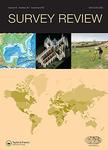版权所有:内蒙古大学图书馆 技术提供:维普资讯• 智图
内蒙古自治区呼和浩特市赛罕区大学西街235号 邮编: 010021

作者机构:Cent S Univ Sch Geosci & Infophys Changsha 410083 Peoples R China Univ Laval Dept Sci Geomat Laval PQ G1V 0A6 Canada
出 版 物:《SURVEY REVIEW》 (测量评论)
年 卷 期:2016年第48卷第349期
页 面:287-295页
核心收录:
学科分类:070801[理学-固体地球物理学] 07[理学] 08[工学] 0708[理学-地球物理学] 0816[工学-测绘科学与技术] 0814[工学-土木工程]
基 金:Scientific Research Fund of Hunan Provincial Education Department [13K007] China Postdoctoral Science Foundation [2014M550425, 2013M540641] Teacher Research Fund at Central South University [2013JSJJ004] State Key Laboratory of Geo-information Engineering [SKLGIE2013-M-2-4]
主 题:GPS BeiDou GLONASS Galileo Measurement noise Multipath
摘 要:With the rapid development of BeiDou system (BDS) and steady progress of Galileo system, the current GNSS (Global Navigation Satellite System) constellations consist of GPS, GLONASS, BeiDou and Galileo. The real signals from the four constellations have been available, which allows us to analyse and compare their measurement noises and multipath effects. In this study, a zero-baseline test is conducted using two Trimble NetR9 receivers to assess and compare the noises and multipath of measurements on multiple frequencies from the four satellite systems. The zero-baseline double difference approach is utilised to analyse the receiver noises. The code multipath combination and triple-frequency carrier phase combination approaches are exploited to analyse a comprehensive effect of the multipath and noises on the code and carrier phase measurements, respectively. Based on the analysis of the zero-baseline dataset, the results indicate that the code measurement noise levels range from 5 to 25 cm while the carrier phase noise levels vary within 0.9-1.5 mm for different frequencies and constellations. The code multipath and noise (CMN) level for GLONASS is the largest with a root mean square (RMS) value of 39 cm on both G1 and G2 frequencies whereas the Galileo code measurements exhibit a smallest level on the E5 frequency with a RMS value of only 10 cm. The RMS of the carrier phase multipath and noises (PMN) ranges from 1.3 to 2.6 mm for BeiDou and Galileo satellites. By contrast, the triple-frequency carrier phase combinations from the GPS Block IIF satellites demonstrate a much larger RMS value of 5.6 mm owing to an effect of inter-frequency clock biases.